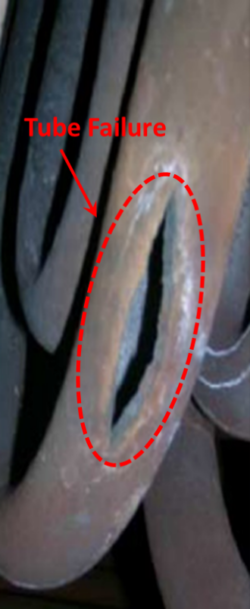CASE STUDY
Pulverized Coal Fired Boiler | Persistent Superheater Tube Failures
| PLANT LOCATION | Asia |
| FACILITY DESCRIPTION | Metal Processing |
| BOILER TYPE | Bi-Drum |
| BOILER CAPACITY | 400,000 [lbm/hr] |
| STEAM CONDITIONS | 900 [psi] @ 850[°F] |
Conditions:

A pulverized coal fired industrial boiler experienced several superheater tube failures about six months after commissioning resulting in several boiler shut downs. The failures were in the platen superheater which hung above the furnace and acted as the first stage of the superheater.
The boiler manufacturer investigated the failures and concluded that they were caused by poor water treatment. Following several adjustments to the water treatment chemistry the problem still persisted more than 12 months after the boiler’s warranty period had expired.
Design Boiler was engaged to independently assess the boiler design and determine the likely cause of the failures. Extensive performance testing was conducted on the boiler over several weeks. The results of this testing were assessed in conjunction with computer model simulations to establish the likely cause of the superheater failures. This work was able to prove that the platen superheater had been incorrectly designed with an excess amount of heating surface which allowed it to absorb substantially more heat than the superheater tubes were designed to withstand.
The problem was compounded by the fact that a spray attemperator was installed to control superheater temperatures. On a superheater fitted with spray attemperators, excessive heat absorption across the primary stage requires the attemperator to spray a greater quantity of water into the secondary inlet stream to control the final steam temperatures. Any increase in spray flow will result less steam through the primary superheater. The reduction in steam flow through the primary superheater will reduce its ability to cool and regulate high tube metal temperatures, leading to tube failures in this part of the superheater. This can be demonstrated by conducting a heat and mass balance across the superheater.
The performance tests and software simulations confirmed that this was occurring and was the most likely cause of the superheater tube failures. The platen superheater was redesigned removing an appropriate amount of heating surface and the modified design installed at the next annual outage. This modification effectively fixed the problem.
